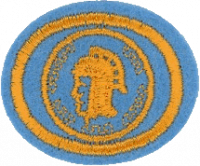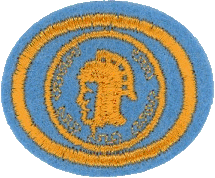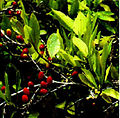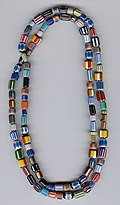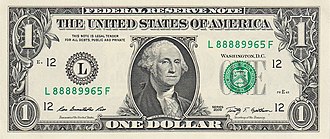Difference between revisions of "AY Honors/Currency/Answer Key/es"
(Created page with "</noinclude> <noinclude>") |
(Created page with "{{clear}}") |
||
| Line 423: | Line 423: | ||
{{clear}} | {{clear}} | ||
| − | + | {{clear}} | |
| − | |||
| − | |||
| − | |||
| − | |||
| − | + | {{clear}} | |
| − | |||
| − | |||
| − | |||
| − | |||
| − | + | {{clear}} | |
| − | |||
| − | |||
| − | |||
| − | |||
| − | |||
| − | + | {{clear}} | |
| − | |||
| − | |||
| − | |||
| − | |||
| − | |||
| − | |||
| − | + | {{clear}} | |
| − | |||
| − | |||
| − | |||
| − | |||
| − | |||
| − | |||
| − | |||
| − | |||
| − | + | <noinclude></noinclude> | |
| − | <noinclude | ||
| − | |||
{{CloseReq}} <!-- 8c --> | {{CloseReq}} <!-- 8c --> | ||
{{ansreq|page={{#titleparts:{{PAGENAME}}|2|1}}|num=8d}} <!--T:80--> | {{ansreq|page={{#titleparts:{{PAGENAME}}|2|1}}|num=8d}} <!--T:80--> | ||
| − | <noinclude> | + | <noinclude></noinclude> |
| − | </noinclude | ||
| − | |||
| − | + | {{clear}} | |
| − | |||
| − | |||
| − | + | {{clear}} | |
| − | |||
| − | |||
| − | |||
| − | |||
| − | |||
| − | |||
| − | |||
| − | |||
| − | |||
| − | |||
| − | |||
| − | |||
| − | |||
| − | |||
| − | |||
| − | |||
| − | |||
| − | |||
| − | |||
| − | |||
| − | |||
| − | |||
| − | |||
| − | |||
| − | |||
| − | |||
| − | |||
| − | |||
| − | |||
| − | |||
| − | |||
| − | |||
| − | |||
| − | |||
| − | |||
| − | |||
| − | |||
| − | |||
| − | |||
| − | |||
| − | |||
| − | |||
| − | |||
| − | |||
| − | |||
| − | |||
| − | |||
| − | |||
| − | |||
| − | |||
| − | |||
| − | |||
| − | |||
| − | |||
| − | |||
| − | + | {{clear}} | |
| − | |||
| − | |||
| − | |||
| − | |||
| − | |||
| − | |||
| − | |||
| − | |||
| − | + | {{clear}} | |
| − | |||
| − | |||
| − | + | <noinclude></noinclude> | |
| − | <noinclude | ||
| − | |||
{{CloseReq}} <!-- 8d --> | {{CloseReq}} <!-- 8d --> | ||
{{CloseReq}} <!-- 8 --> | {{CloseReq}} <!-- 8 --> | ||
| − | <noinclude> | + | <noinclude></noinclude> |
| − | </noinclude> | + | ==Referencias== |
| − | == | ||
| − | |||
| − | + | Nota: Los datos acerca de la moneda de su país pueden obtenerse a partir del Departamento de Tesorería del gobierno. | |
| − | |||
| − | |||
| − | |||
| − | |||
| − | |||
<div lang="en" dir="ltr" class="mw-content-ltr"> | <div lang="en" dir="ltr" class="mw-content-ltr"> | ||
Revision as of 20:38, 26 April 2021
1
Very soon, we decided stones would not be a good medium of exchange, because:
- it was not very portable
- it could not be easily divided
- it was heavier than it was worth
- sometimes we could not recognize it
- and the neighbor's kid found a rockpile on the other side of the stream
Fast forward a few years, and currency has now been developed. Currency is a unit of exchange, which allows goods and services to be exchanged. It is one form of money (where money is anything that serves as a medium of exchange, a store of value, and a standard of value).
Unique forms of money
2
United States Mint
The United States Mint primarily produces circulating coinage for the United States to conduct its trade and commerce. The main Mint facility is located in Philadelphia, Pennsylvania, and branch facilities are located in Denver, Colorado, San Francisco, California, and West Point, New York.
Mint marks in United States coinage include:
- P for the Philadelphia Mint,
- D for the Denver Mint,
- S for the San Francisco Mint,
- W for the West Point Mint,
- CC for the Carson City Mint,
- C for the Charlotte Mint, and
- O for the New Orleans Mint.
Most coins of the Philadelphia Mint earlier than 1980 are unmarked.
Current Facilities
The Mint's largest facility is the Philadelphia Mint, one of four active coin-producing mints. The current facility at Philadelphia, which opened in 1969, is the fourth Philadelphia Mint. The first was built in 1792, when Philadelphia was still the U.S. capital, and began operation in 1793. Until 1980, coins minted at Philadelphia bore no mint mark, with the exceptions of the Susan B. Anthony dollar and the wartime Jefferson nickel. In 1980, the P mint mark was added to all U.S. coinage except the penny. Until 1968, the Philadelphia Mint was responsible for nearly all official proof coinage. Philadelphia is also the site of master die production for U.S. coinage, and the engraving and design departments of the Mint are also located there.
The Denver branch began life in 1863 as the local assay office, just five years after gold was discovered in the area. By the turn of the century, the office was bringing in over $5 million in annual gold and silver deposits, and in 1906, the Mint opened its new Denver branch. Denver uses a D mint mark, and strikes coinage only for circulation. It also produces its own working dies ,as well as working dies for the other Mints.
The San Francisco branch, opened in 1854 to serve the goldfields of the California Gold Rush, uses an S mint mark. It quickly outgrew its first building and moved into a new facility in 1874. This building, one of the few that survived the great earthquake of 1906, served until 1937, when the present facility was opened. It was closed in 1955, then reopened a decade later during the coin shortage of the mid-60s. In 1968, it took over most proof-coinage production from Philadelphia, and since 1975, it has been used solely for proof coinage, with the exception of the Anthony dollar and a portion of the mintage of cents in the early 1980s. (These cents are indistinguishable from those minted at Philadelphia.)
The West Point branch is the newest branch mint. Its predecessor, the West Point Bullion Depository, was opened in 1937, and cents were produced there from 1973 to 1986. The West Point Mint gained official status as a branch mint on March 31, 1988. Along with the cents already mentioned, which were identical to those produced at Philadelphia, West Point has struck a great deal of commemorative and proof coinage bearing the W mint mark. In 1996, West Point produced clad dimes, but for collectors, not for circulation. The West Point facility is still used for storage of part of the United States' gold bullion reserves, and West Point is now the United States' only production facility for gold, silver and platinum American Eagle coins.
The Mint is not responsible for the production of paper money; that is the responsibility of the Bureau of Engraving and Printing.
Bureau of Engraving and Printing
The Bureau of Engraving and Printing (BEP) is an government agency in the United States Department of the Treasury that primarily prints Federal Reserve notes for the Federal Reserve, but also produces a variety of other government security documents.
The Federal Reserve notes are printed at the bureau's facilities in Washington, D.C. and Fort Worth, Texas. The BEP produces other government products such as postage stamps for the United States Postal Service, hand engraved invitations on behalf of the White House, Treasury securities, identification cards, and naturalization certificates. The BEP does not produce any U.S. coins; that is the responsibility of the United States Mint. The Fort Worth facility was opened officially on April 26, 1991.
The BEP had its foundations in 1861 with workers signing, separating, and trimming sheets of Demand Notes in the Treasury building. In 1877, the Bureau became the sole producer of all United States bills and notes.
Coin Composition
In 1792, law was enacted which said that American money was to be made of gold, silver, and copper for the $10, $5, and $2.50 coins. The $1, half-dollar, quarter, dime, and half-dime were made of silver. The 1-cent and half-cent were made of copper.
During the Great Depression, the mint stopped producing gold coins (1933). In 1964 a silver crisis caused the replacement of silver in the quarter and dime, but the half-dollar's silver content was reduced from 90 per cent to 40 per cent silver from 1965 to 1970. Today, these coins are composed of cupro-nickel clad, with a pure copper core, and an outer layer of a 75 per cent copper, 25 per cent nickel alloy.
Nickels are also made from the 75-25 alloy, and the cent which was a copper coin, is now composed of copper plated zinc. The cents are less expensive to manufacture, and weighs 2.5 grams and is about 20 percent less than cent coins previously minted with 95 percent copper and 5 percent zinc, which weighed 3.11 grams. The composition of the cent was changed in 1982, and cents, and both copper and copper-plated zinc cents were produced in that year.
3
4
4a
An alloy is a combination of two or more elements, at least one of which is a metal, and where the resulting material has metallic properties. The resulting metallic substance usually has different properties (sometimes significantly different) from those of its components. Nearly all coins are made of alloys.
4b
A coin that has had its date altered in an attempt to deceive someone into thinking it is more valuable than it really is.
4c
A buffed coin is one that's been polished to make it look like an uncirculated or proof coin. Buffing a coin wears down its original surface, reducing its value.
4d
Coins which are made by pouring a molten alloy into a mold.
4e
Coins made of layers, like a metal sandwich.
4f
Commemorative coins are legally issued coins with a design intended to commemorate or draw attention to some event or person. They are so called to distinguish them from regular issue coinage.
4g
An engraved tool used for stamping a design onto a coin.
4h
The field is the background—the part of the coin that shows no picture or words.
4i
An inscription is any letter, word, or phrase pressed into the surface of a coin.
4j
A coin having letters written on its edge.
4k
The mint mark is a small letter that tells which mint branch struck the coin.
4l
The front side of currency or a coin (often called "heads" on a coin).
4m
A blank disc of metal from which a coin is made.
4n
Proof coins use a special process that gives them a shiny, mirror-like background and a "frosted" relief. Proof sets are made every year for all of our circulating coins. Like uncirculated coins, proof coins are not meant to be spent.
4o
The reeded edges still found on many coins (always those that were once made of gold or silver, even if not so now) were originally designed to show that none of the valuable metal had been shaved off the coin. These show up as ridges along the edge of the coin.
4p
The back side of currency or a coin (often called "tails" on a coin).
4q
A particular design or motif used over a period of time. This can used for a single denomination, or in some cases, used for several denominations. The Liberty Seated series encompasses five denominations, the Barber series three, etc.
4r
A representative coin, usually a common date, from a particular issue of a specific design, size, or metallic content of U.S.coinage. For example: the "Mercury Head" dime is a "type" coin, as is the "Lincoln" penny.
4s
A whizzed coin has been wire brushed or burnished, often on a wheel, for the same reason. Whizzing a coin wears down its original surface, reducing its value.
4t
When a coin is made, the blank is placed inside a collar and the coin is struck with a die. Sometimes a very thin piece of metal from the blank will flow out between the collar and the die. This is called the wire edge.
5
| One Dollar Bill | |
|---|---|
6
7
7a
7b
7c
8
8a
8b
8c
8d
Referencias
Nota: Los datos acerca de la moneda de su país pueden obtenerse a partir del Departamento de Tesorería del gobierno.
